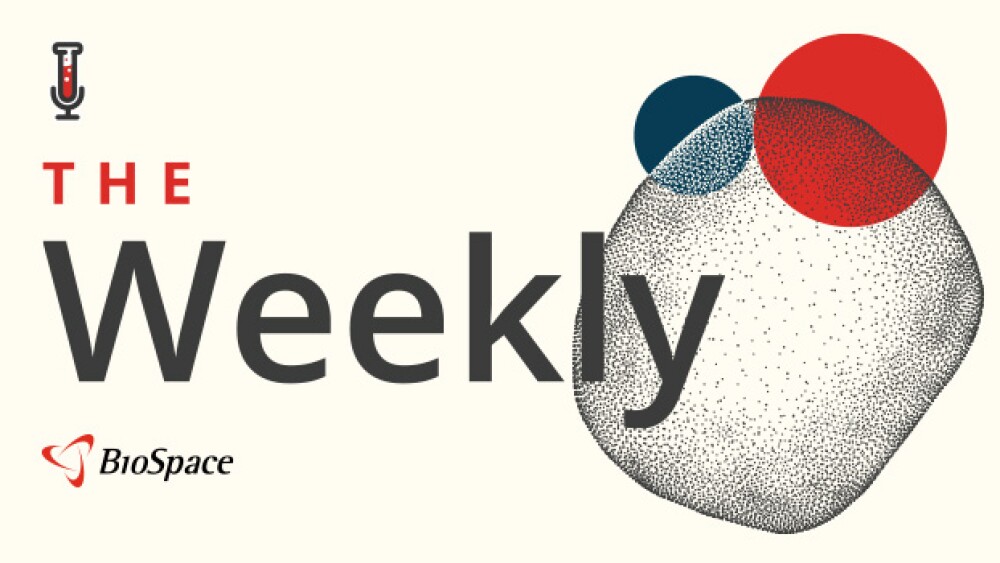Additionally, tasimelteon demonstrated significant improvements across a number of sleep and wake parameters including measures of total sleep time, nap duration, and timing of sleep. Tasimelteon also showed significant improvements over placebo in the Non-24 Clinical Response Scale (N24CRS) as well as in the Clinical Global Impression of Change (CGI-C), an overall global functioning scale. These results provide robust evidence of a direct and clinically meaningful benefit to patients with Non-24.
Non-24 is a serious, rare circadian rhythm disorder that affects a majority of totally blind individuals who lack light perception and cannot entrain (reset) their master body clock to the 24-hour day. Currently there is no approved treatment for Non-24.
"Today's results confirm tasimelteon as a strong circadian regulator capable of entraining the master body clock in patients with Non-24. We are particularly impressed and excited by the magnitude and robustness of the direct clinical benefits to patients," said Mihael H. Polymeropoulos, M.D., President and CEO of Vanda. "We believe that tasimelteon can be an effective and clinically meaningful treatment for patients suffering with this debilitating disorder."
"As a person who regularly experiences the debilitating symptoms of Non-24, these findings are important to me and I think they are important to the blind community as a whole, because they give us hope that a potential new treatment approach is on the horizon," said Melanie Brunson, Executive Director of the American Council of the Blind.
Primary Endpoints
The SET study was an 84 patient randomized, double-masked, placebo-controlled study in patients with Non-24. The primary endpoints for this study were Entrainment of the melatonin (aMT6s) rhythm to the 24-hour clock and Clinical Response as measured by Entrainment plus a score of greater than or equal to 3 on N24CRS.
Primary Endpoint Results
Table 1
Tasimelteon (%) | Placebo (%) | p-value | |
Entrainment (aMT6s) | 20.0 | 2.6 | 0.0171 |
Clinical Response (Entrainment1+ N24CRS >=3) | 23.7 | 0.0 | 0.0028 |
Clinical Response2 (Entrainment1+ N24CRS >=2) | 28.9 | 0.0 | 0.0006 |
N24CRS >=32 | 28.9 | 2.9 | 0.0031 |
N24CRS >=22 | 57.9 | 20.6 | 0.0014 |
1) Entrainment status from the randomized portion of the SET study and/or the screening portion of the RESET study | |||
2) Sensitivity Analysis |
Secondary Endpoints
The SET study also assessed a number of secondary endpoints including Entrainment of cortisol rhythm and a broad range of clinical sleep and wake parameters. These parameters included improvement in the total nighttime sleep in the worst 25% of nights (LQ-nTST), decrease in the total daytime sleep duration in the worst 25% of days (UQ-dTSD) and midpoint of sleep timing (MoST) which is derived from a combination of the sleep reported for both nighttime and daytime. CGI-C is a seven-point rating scale of global functioning with lower scores indicating larger improvements.
Secondary Endpoint Results
Table 2
Tasimelteon | Placebo | p-value | |
Entrainment (cortisol) (%) | 17.5 | 2.6 | 0.0313 |
N24CRS (LS mean) | 1.77 | 0.67 | 0.0004 |
CGI-C1 (LS mean) | 2.6 | 3.4 | 0.0093 |
LQ-nTST and UQ-dTSD >=90 min2 (%) | 23.8 | 4.5 | 0.0767 |
LQ-nTST and UQ-dTSD >= 45 min3(%) | 31.6 | 8.8 | 0.0177 |
LQ-nTST (LS mean minutes) | 57.0 | 16.8 | 0.0055 |
UQ-dTSD1 (LS mean minutes) | -46.2 | -18.0 | 0.0050 |
MoST (LS mean minutes) | 34.8 | 14.4 | 0.0123 |
1) For CGI-C and UQ-dTSD smaller numbers indicate improvement. |
2) For this endpoint, only subjects with significant sleep and nap problems at baseline were included. |
3) Sensitivity Analysis |
The results of the SET study represent the initial data from the tasimelteon Non-24 Phase III development program and demonstrate the multiple benefits of this novel therapy in treating patients suffering from this rare circadian rhythm disorder. In the SET study, tasimelteon was demonstrated to be safe and well tolerated. Vanda expects to report top-line results from the second Phase III study (RESET) for tasimelteon in Non-24 in the first quarter of 2013. Vanda plans to submit a New Drug Application (NDA) to the U.S. Food and Drug Administration (FDA) in mid-2013.
"We would like to thank our patients, their advocates, investigators, advisors and colleagues for making this study possible," said Mihael H. Polymeropoulos, M.D., President and CEO of Vanda. "We look forward to the successful completion of the Non-24 clinical program."
Non-24 Scale of Clinical Response (N24CRS)
Assessment | Threshold of response |
LQ-nTST | >=45 minutes increase in average nighttime sleep duration |
UQ-dTSD | >=45 minutes decrease in average daytime sleep duration |
MoST | >=30 minutes increase and a standard deviation <=2 hours during double-masked phase |
CGI-C | <=2.0 from the average of Day 112 and Day 183 compared to baseline |
Tasimelteon Development Program for Non-24
The SET study is the first of four clinical studies conducted as part of Vanda's Phase III development program for tasimelteon in the treatment of Non-24. Data from the RESET study, a Phase III study evaluating the maintenance of entrainment effect of tasimelteon, is expected in the first quarter of 2013. In addition, two safety studies are ongoing to support an NDA filing in the U.S. The tasimelteon Non-24 development program is the largest conducted to date for any investigational therapy for the treatment of Non-24.
About Non-24-Hour Disorder
Non-24-Hour Disorder (Non-24) is a serious, rare and chronic circadian rhythm disorder that affects a majority of totally blind individuals in the U.S., or between 65,000 and 95,000 people. Tasimelteon has been granted orphan drug designation for the treatment of Non-24 in both the U.S. and the European Union. Non-24 occurs almost entirely in individuals who lack the light sensitivity necessary to entrain, or synchronize, the master body clock in the brain with the 24-hour day-night cycle. Most people have a master body clock that naturally runs longer than 24-hours, and light is the primary environmental cue that resets it to 24-hours each day. Non-24 sufferers have a master body clock that continually delays, putting them to sleep later and later each day, turning night into day and day into night, until the cycle starts all over again. The sleep condition is highly disruptive, making it difficult to do well in school, hold down a job or maintain relationships. For more information on Non-24, please visit http://24sleepwake.com/.
About Tasimelteon
Tasimelteon is a circadian regulator in development for the treatment of Non-24. Tasimelteon is a melatonin agonist of the human MT1 and MT2 receptors, with a 2-4 times greater specificity for MT2. Tasimelteon's ability to reset the master body clock in the suprachiasmatic nucleus (SCN), located in the hypothalamus, results in the entrainment of the body's melatonin and cortisol




